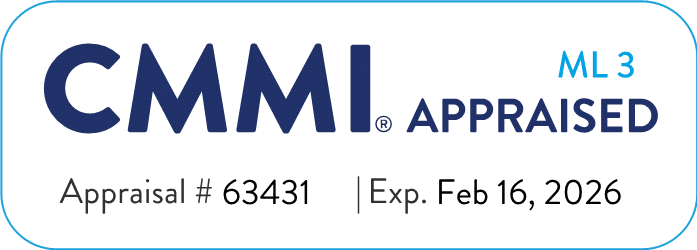The purpose of this paper is to offer a technique to more clearly and fully describe healthcare errors detected in audits, which can lead to improved return on investment (ROI) for healthcare audits.
A clear and complete description of all identified errors in a healthcare audit report will help assure that all readers of the report, including the audited provider, understand why each error is included and healthcare claims are questioned. Additionally, the technique described in this post will help responsible officials adjudicate questioned claims, thus leading to a more accurate determination of the total overpayment for refund.
Learn How Our Audit Services Can Help
Background on Healthcare Audits
The objectives of healthcare audits are to:
- determine compliance with State and Federal laws, regulations, policies, and procedures
- determine if services billed and paid were actually provided
- identify and report provider billing and/or payment irregularities
Additionally, the goal of healthcare audits is to maximize the overall ROI. Obviously, the larger the total overpayment, the higher the ROI.
Healthcare Audit Process
Healthcare audits typically follow a straightforward process.
- The audit team or another designated entity identifies a provider and a period for audit;
- The team receives a universe of claims and selects a sample (usually random) for review;
- The team reviews the sampled claims to determine whether and to what extent the provider did or did not provide the services, did or did not comply with applicable State and Federal laws and regulations, exhibited behaviors that were irregular, etc.;
- The team then develops a draft audit report with findings of potential overpayments.
After sharing the report with the designated entity and/or provider, the audit team issues a final report and recommends collection of any overpayments.
Discussion: Reporting Multiple Healthcare Errors
In writing this post, Integrity Management Services researched
- the Generally Accepted Government Auditing Standards (GAGAS) contained in the Government Accountability Office publication Government Auditing Standards-2011 Revision,
- Federal and State government websites,
- Centers of Medicare & Medicaid Services (CMS) guidance,
- and publically available healthcare audit reports.
As shown on the included table at the end of this post, CMS has issued some general guidance on the nomenclature used to describe errors contained in healthcare audit reports.
Reporting of Multiple Healthcare Errors
Our experience suggests that if a claim has one error, the claim has a high likelihood of multiple errors. Yet we find in publicly available audit reports that sometimes claims are shown with only a single error listed. We question this approach.
Why should we care if not every single error is reported? Why is reporting multiple errors beneficial, especially for ROI? Certainly, once a claim has been paid in error, it cannot be paid in error twice.
In short, it does matter.
The reason for reporting multiple errors has to do with provider appeals.
Our experience indicates that providers often appeal errors that audit teams identify. And why not? Appealing questioned claims can prevent providers from having to pay potentially millions of dollars, especially if the audit team projects its findings to the universe of claims for that provider.
If the audit team lists multiple errors for a single claim, the provider will have a harder time disproving all the reasons for which the audit team questioned the claim. On appeal, the provider may be able to provide records not previously shared with the audit team to persuade an arbiter to dismiss a missing record specific service finding (see the CMS table), but a finding of an unauthorized service or wrong place of service may still stand.
All the audit team needs is one identified error to stand on appeal for the claim to count towards the audit’s ROI.
Healthcare Error Report Description Specificity
In our experience, missing records is one of the most common – if not the most common – reason for audit findings related to healthcare claims. However, audit teams can fall into the trap of describing findings based on missing records too generally.
We find that the wording for missing records is often overly broad. For example, an audit report might list a litany of one or more things that a record might possibly be missing (e.g., the procedure/service notes, physician signature, patient’s medical history, or signed consent form) without naming specifically what was missing from each questioned claim.
The use of this generalized “one or more” wording creates problems in that specific deficiencies for each claim are not disclosed. On appeal, providers can argue to the arbiter that neither the provider nor the arbiter knows exactly what is missing, which renders the provider unable to adequately respond to the finding. This lack of specificity could lead the arbiter to rule in favor of the provider, thus hurting the audit report’s ROI.
However, for most errors found in the CMS table, the wording is quite specific. A condition exists or does not exist. For example, a procedure code is either proper (i.e., correct) or improper (i.e., incorrect). A procedure code cannot be “half correct.” Similarly, a service is either authorized or unauthorized. Readers of the report, including the audited provider, know what the audit team found. And these additional, more specific errors, may help claims withstand appeal.
Conclusion: Healthcare Audit Reports Can Lack Detail & Overlook Errors
Having complete information in healthcare audit reports is essential for audited providers and responsible officials to react to findings. A “complete” audit will report that include all errors associated with claims and provide specific information about all findings for all claims, including missing records.
Providing detailed information helps all readers, including audited providers and those charged with adjudicating the audit recommendations, to understand its contents. It also helps in maximizing an audit’s ROI. Again, if one of the identified errors is overturned, the remaining deficiencies could still justify an overpayment.
CMS Claims Review Worksheet Error Codes
| Error | Code | Definition |
| Missing Record | MR | The provider failed to provide any portion of the medical records requested |
| Missing Record Specific Service | MRSS | The provider produced medical records, but the specific service billed was not documented |
| Improper Procedure Code | IPC | Provider up coded the service |
| Non-covered Service | NCS | Provider Billed for a non-covered service |
| Non-eligible Provider | NEP | The provider who billed for services was not eligible to provide the service |
| Quantities More Than Prescribed | QMP | Quantities billed are more than the quantities which were prescribed |
| Unauthorized Service | US | The required record showed the service provided requires prior approval and no prior approval was given |
| Not Medically Necessary | NMN | Service provided deemed not medically necessary |
| Part of Global Fee | PGF | Professional services billed when covered by global procedure |
| Wrong Place of Service | WPOS | Place of service listed not allowable for given procedure |
| Other Insurance Available | OIS | Another insurance carrier was available to cover |
At IntegrityM we offer Medical Claims Audits, Fraud Investigation, Data Analysis and more. Contact us today to learn how we can help your organization.











